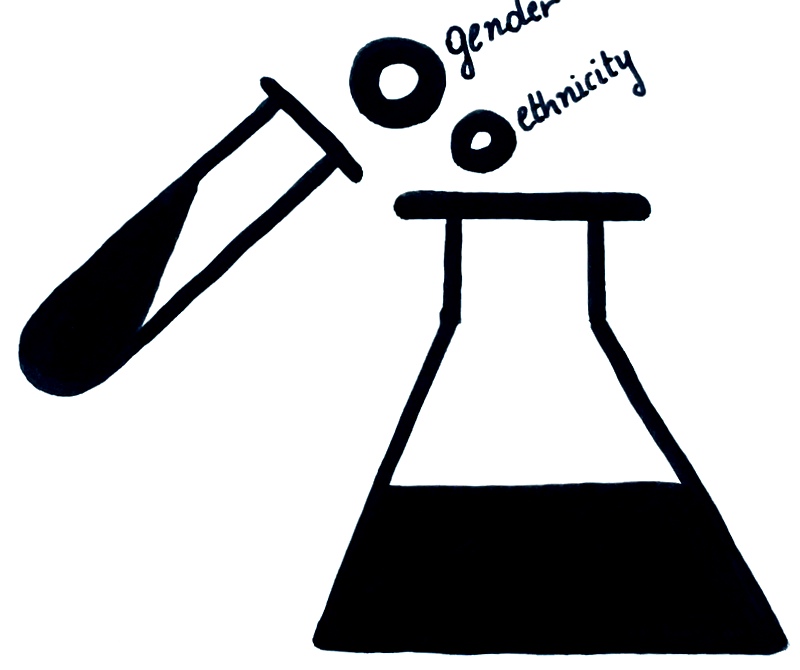Which one’s the best?
Research methods in person perception: A critical review

Person perception and impression formation are most commonly investigated within social experiments that are conducted in a Behavioural Research Laboratory (BRL).

Static scenarios
A typical experiment scenario would look like this:
Subjects (= participants) are presented with category labels (e.g. female, Asian, student) or personality trait information (e.g. shy, introverted, polite) about an individual. They are then asked to form an impression of that individual based on the given information. This can be in form of an oral or written report, depending on the study.
Some studies use static faces or full-body photographs to investigate person perception. Others combine visual and textual information, using photos and profiles of people that contain multiple pieces of information. On the basis of these, participants have to rate how likely it is that the person in question has a certain personality trait.
► For example, the profile description would say something like “male, White, middle-aged, plastic surgeon” and you would be asked to rate whether you think this person “is ambitious” on a Likert scale from 1 (not at all likely ) to 5 (definitely).
Paper people
First impressions are a hot topic in job interviews.
To simulate a job interview/hiring situation, an experimental method called the “paper-people paradigm” is commonly used. Therein subjects are presented with on-paper profiles belonging to different persons (job candidates) whom they have to evaluate based on some job selection criteria. They are then asked to judge based on their impression of the paper profile whether a particular candidate would fit the job.

↑ Experimental control
The advantage of such static research methods is that they afford experimental control: They allow to control and minimise the effect of extraneous (external, unintended) variables and environment (setting/context specific) variables which are not in the interest of the study.
They also “eliminate” alternative explanations for research results. Thereby they strengthen the ability to infer causality between explanatory variable (= belonging to a particular social category) and response variable (= therefore having a particular personality trait). In other words, those methods allow for higher internal validity than field studies for example.
↓ Representativeness
However their main drawback is that you can’t really generalise the results of such experiments onto other “real life” settings/ contexts (i.e. they have low external validity). They simply fall short of being representative of the actual live social encounter.
For instance, the paper-people paradigm has been criticised for its low external validity because participants made different judgements on personality depending on whether they were dealing with real or paper people.
Put in a nutshell
What these methods lack is both the social context and the social interactions of real life face-to-face encounters in which impression formation mostly takes place.
Coming up
I present you a fascinating, unorthodox experiment for studying person perception in a dynamic, interactive, real life setting.

Stay tuned! 🐝
On a side note I want to add that perhaps static profiles of individuals (presenting participants a profile picture and a short description of someone) will experience a revival in impression formation studies in the near future.
If the general trend goes towards “meeting” someone first via virtual channels like social media, then people often solely rely on profile pictures coupled with basic infos on gender, age and occupation categories.
Thinking about it, the research methods I just presented to you – static as they be – seem to have quite something in common with how people on dating apps like tinder or bumble form first impressions of their potential “matches”… i.e they might not be that unrepresentative of ‘reality’ after all.
Written and published June 2019
by Jessica
List of references I used in this article:
Brewer, M. (1998). Category-based vs. Person-based Perception in Intergroup Contexts. European Review of Social Psychology, 9(1), 77-106.
Gorman, Clover, & Doherty. (1978). Can we learn anything about interviewing real people from “interviews” of paper people? Two studies of the external validity of a paradigm. Organizational Behavior and Human Performance, 22(2), 165-192.
Lepore, L., Brown, R., & Kruglanski, Arie W. (1997). Category and Stereotype Activation: Is Prejudice Inevitable? Journal of Personality and Social Psychology, 72(2), 275-287.
Macrae, C. N., Quinn, K. A., Mason, M. F., & Quadflieg, S. (2005). Understanding Others: The Face and Person Construal. Journal of Personality and Social Psychology, 89(5), 686-695.
Monroe, B., Koenig, B., Wan, K., Laine, T., Gupta, S., Ortony, A., & Kitayama, Shinobu. (2018). Re-Examining Dominance of Categories in Impression Formation: A Test of Dual-Process Models. Journal of Personality and Social Psychology, 115(1), 1-30.
Naumann, L., Vazire, S., Rentfrow, P., & Gosling, S. (2009). Personality Judgments Based on Physical Appearance. Personality and Social Psychology Bulletin, 35(12), 1661-1671.